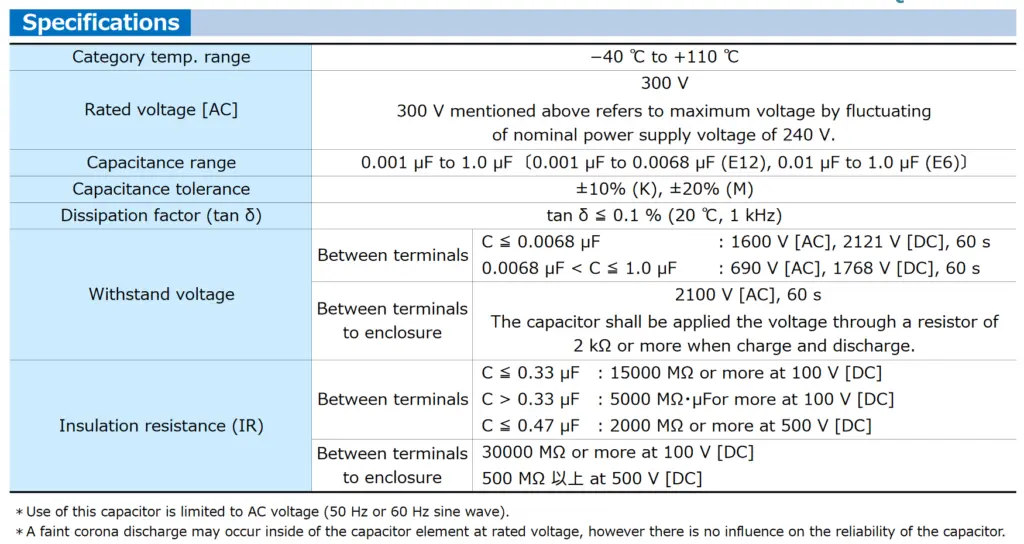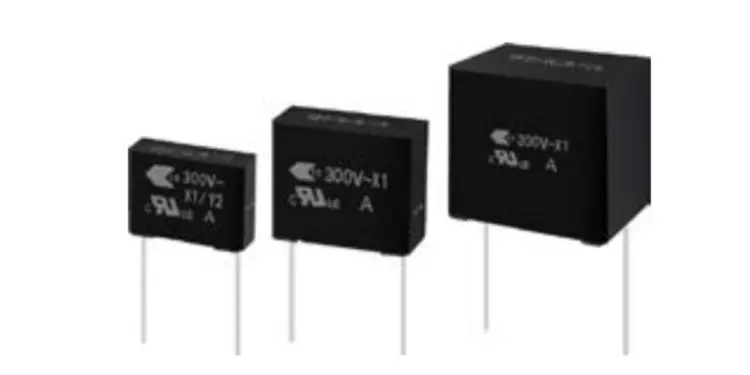Panasonic Industry has released new ECQUB series of safety X1/Y2 metallized polypropylene capacitors. The new ECQUB series feature non-inductive construction using metallized polypropylene film in flame-retardant plastic case and non-combustible resin.
Features:
- High safety (with safety function)〔Class X1〕
- High moisture resistance 85°C, 85%, 275 V [AC] 500 h
- Flame-retardant plastic case and non-combustible resin
- RoHS compliant
Applications:
- Interference suppressors for electronic equipment
Specifications:

Source:
Panasonic Industry































